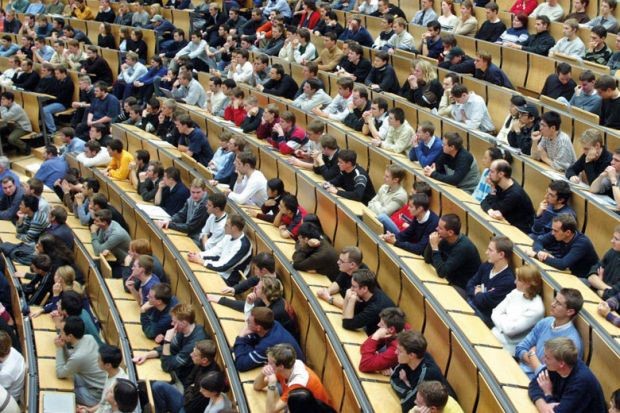Home » Articles posted by Lincoln Ngaboyisonga
Author Archives: Lincoln Ngaboyisonga
Education Financing in Germany: Quality, Access, and Compromise.

Germany often receives praise for having one of the best education systems in Europe and the world. There are many factors that make the German education system a model. Among these are free higher education, one of the most effective Vocational Education Tracks (VET), and a well-rounded basic education.
One of the reasons for the success of this system is the country’s public expenditure on education. UNESCO’s Global Education Monitoring Report shows that the country spends 4.8% of its GDP and 10% of its government expenditure on education, which meets UNESCO’s 2030 framework for governments spending on education and Sustainable development Goal 4 of quality education for all. Paired with effective education programs, this ample financing leads to high quality, and accessible to all education. When looking at primary and secondary education, there are various policies that ensure that both access and quality aspects of education remain elevated. The first 9 years of basic education, for instance, are compulsory from the age of 6. Throughout this period, a system known as Tracking ensures that students are placed in schools that are matched to their academic abilities, which ensures that every student’s needs are being addressed.
Another element that reflects the German system’s high level of access and quality is its unique VET system. With a dual system that allows the students to learn in the classroom and on the job, the German VET system has shown to be one of the best internationally. According to the Organization for Economic Cooperation and Development (OECD), Germany ranks second in youth employment, a score that is often attributed to the country’s VET system.
The Price of free higher education
Though effective in many aspects, the German education system does not have it all figured out. This is mostly reflected in the country’s higher education system, where the issue of government expenditure on education comes back into question. Known to provide free higher education for both citizens and international students, the country has had difficulty in maintaining this almost too-good-to-be-true free higher-ed policy while ensuring that funding and quality are also maintained. As the university enrollment rate increases from the relatively low numbers, public universities have been experiencing larger student to teacher ratios, less learning resources for students, and others. Quartz explains that whereas the average student expense per student is $27,924, Germany’s declined to $16,895. In view of this issue, Germany’s seemingly sufficient government expenditure on education is no longer fitting the kind of standard Germany’s higher education system has maintained over the years. This issue puts in perspective that oftentimes, funding is what is at the center of the compromise between education access and quality.

The compromise between access and quality is mostly seen in the dilemma to maintain higher free for the increasing number or students enrolling and or introducing tuition to ensure a healthy student/teacher ratio and other measures of quality. Having grappled with the idea of re-introducing tuition fees in higher education, major pushback arose from the public and the country’s politicians, who have shown a united stance for a tuition-free higher education. Apart from adding higher-ed taxes to graduates, there has not been much progress in finding alternative solutions. With few other options other than to increasing government funding, many have deemed this option to be unsustainable. Government expenditure for higher education increased by a third between 2005 and 2016, adding up to more than $26 billion. This has been an effective way of financing selective funding programs for higher-ed institutions, which has effectively maintained the international ranking and performance of research institutions and other specific programs.
Although Germany meets and exceeds SDG 4, the financing issue it faces reminds us of the challenge faced by developing nations in meeting the goal of quality education for all. For many of these nations, lack of funding leads to poor infrastructure, poor teacher training, reduced access for the less privileged, and others. It reminds us that for SDG 4 to be met, funding through aid, investment and fiscal policies will have to be increased in addition to the right education policies being implemented.
There are various lessons to be learned from the German Education system. From the allocation of government funding to the various education policies, the country’s education system is exemplary in many ways. Nonetheless, it shows us that no system is perfect and that an ongoing search for better education policies is necessary.
Gonzales, CA: How a small town is solving youth unemployment
- By Lincoln Ngaboyisonga and Alexandre Dumouza

Youth unemployment is one of the most alarming economic challenges the United States is currently facing. According to recent reports, 5.5 million youth who are 16-24 are neither enrolled in school nor employed. This statistic represents 12.5% of young adults in the U.S., which is more than double the adult unemployment rate. This problem is nationwide and is even more disparaging in small-town cities such as Gonzales, California. This issue is often a symptom of employment and income issues faced by these kinds of cities. There is a growing focus in California to make sure youth are accessing quality education while obtaining the necessary skills to enter the workforce. Gonzales in particular with a population of approximately 10,000—has an 11% unemployment rate, and 20.4% poverty rate, which are both higher than the California average.
Multiple factors influence youth unemployment. Besides the various familial, social, financial, and educational factors contributing to this issue, the problem is also demographical. Brookings explains that this problem is more prevalent in areas with higher-than-average unemployment rates and other economically destabilizing factors. Such factors include cities facing issues such as de-industrialization (or lack there-of), lower investment rates, shifting economic trends to sectors such as technology, and less densely populated areas with agricultural heritage, Gonzales meets all these criteria.
Extracurricular Solutions in Gonzales
Solving the challenge of youth unemployment in small cities like Gonzales is not just about preparing young adults to enter the workforce. It is about making sure that employment opportunities are available, and that the training and preparation given to the youth is contextualized to the employment demand and prevalent industries in cities experiencing the same economic and employment issue.

To increase student motivation, Gonzales is coming up with various ways of creating innovative opportunities for teens and young adults. One of them is to create a Teen Innovation Center, which promotes college readiness, social entrepreneurship, academic success and innovation. The proposed project will transform a former medical office into an innovation space where youth in Gonzales can have access to resources such as computers to work on STEM projects, cultivate their artistic side and create new ideas. This proposal was made in a city council decision-making process through the creation of a youth council. The program enabled students to utilize their abilities, add to the innovative ideas and future plans for the city, and express their needs in the program.
Another initiative that is preparing youth to solidify their skills and knowledge is the Wings of Knowledge program. The program, which began in 2015, seeks to empower students by focusing on the curriculum application of STEAM (Science, Technology, Engineering, Arts, and Mathematics). According to the co-founder, the program’s purpose is to create a nexus for students to explore local science and engineering, while allowing them to excel at their own pace. What’s unique about this program is that students don’t only learn about such technologies at the comfort of their desk, they get to go out and engage in the field. With the option of joining an agriculture group, students get the opportunity of learning about water studies and climatology, which they can later instruct to younger elementary school students.
Success in the Classroom
In conjunction with informal educational activities, the Gonzales school district is already excelling in providing assistance to aspiring youth who are seeking to develop their skills post-high school. Gonzales supports K-12 students by creating a healthy environment where students can find their passions and learn for the betterment of their own educational careers. Other examples emerge from the schools’ website as it serves as an excellent guide for students seeking higher education. Gonzales high school also offers several initiatives by providing students with options such as their career exploration from their school curriculum, and a career technical day. They also have an annual college-career week at the high school, which can spark a career interest in post-secondary education.
Knowledge, skills, and confidence are the cornerstone of accessing desirable jobs in the U.S. for youth employment. Programs such as those offered in Gonzales provide a foundation to exercise job readiness. Despite the various challenges behind youth unemployment, Education, public-private partnerships, and grassroots initiatives must also play a factor as part of a holistic process that can create ideation, innovation, and spark new ways of connecting skills and knowledge to contribute to future jobs. No matter how many services attempt to enhance youth opportunities, for this process to be effective, youth development must be at the center to create impact and stimulate growth.
Bibliography
College and Career Readiness. (n.d.). Retrieved February 15, 2020, from https://www.gonzalesusd.net/apps/pages/index.jsp?uREC_ID=1485777&type=d&pREC_ID=1634117
Disconnected Youth. (n.d.). Retrieved February 15, 2020, from https://opportunitynation.org/disconnected-youth/
Gonzales, California. (2019, December 10). Retrieved February 15, 2020, from https://www.rwjf.org/en/library/features/culture-of-health-prize/2019-winner-gonzales-california.html
Gonzales, CA. (n.d.). Retrieved February 18, 2020 from Gonzales, CA
Reyes, J., & Monterey Herald. (2018, September 11). Know your roots: Wings of Knowledge program educates students and farmers. Retrieved February 15, 2020, from https://www.montereyherald.com/2018/02/02/know-your-roots-wings-of-knowledge-program-educates-students-and-farmers/
Ross, M., & Bateman, N. (2018, January 31). Millions of young adults have entered the workforce with no more than a high school diploma. Retrieved February 15, 2020, from https://www.brookings.edu/blog/the-avenue/2018/01/31/millions-of-young-adults-have-entered-the-workforce-with-no-more-than-a-high-school-diploma/

